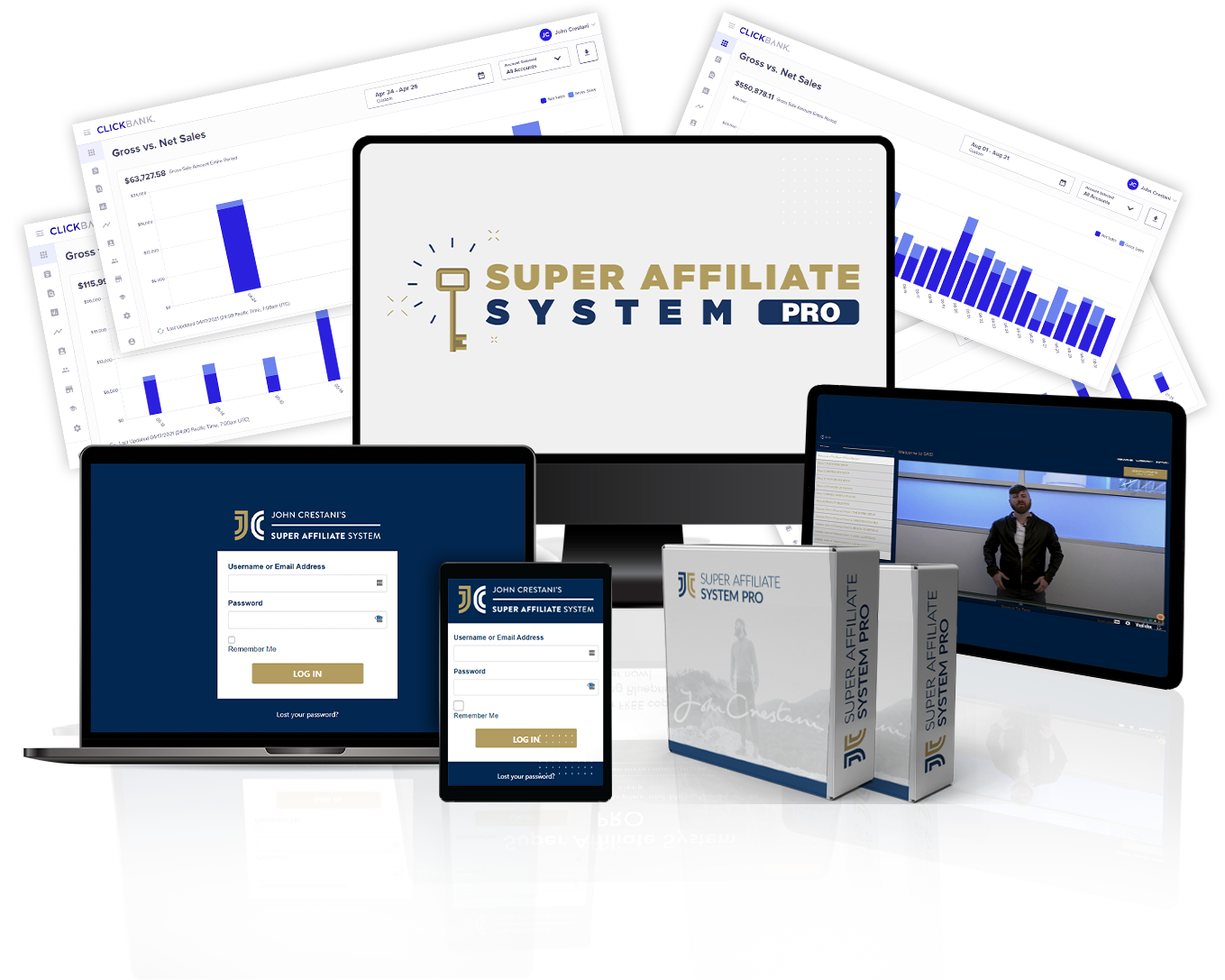10 Proven Steps to Build a Powerful Affiliate Marketing Website for Beginners 2025 (Ultimate Guide)
In 2025, affiliate marketing continues to be one of the most profitable and beginner-friendly online business models. Whether you’re a student, freelancer, or aspiring entrepreneur, building an affiliate marketing website for beginners 2025 can unlock real passive income opportunities if you follow the right steps.
Let’s explore how you can launch your own successful affiliate site, even with zero experience.
Introduction to Affiliate Marketing in 2025
What Is Affiliate Marketing and Why It Still Works in 2025
Affiliate marketing is a performance-based business model where you earn a commission by promoting other companies’ products or services. In 2025, the model has evolved but remains as lucrative as ever thanks to increasing eCommerce growth, influencer credibility, and automation tools.
You don’t need to create your own product. Instead, you connect customers to what they already want — and get paid for it.
The Evolution of Affiliate Marketing: Past to Present
Over the last decade, affiliate marketing has shifted from simple blog links to data-driven, content-rich websites. Modern affiliates now use advanced SEO strategies, AI-driven content creation, and real user reviews to gain trust.
Why Beginners Should Start an Affiliate Website in 2025
For beginners, 2025 offers a golden opportunity. With affordable tools, AI-powered platforms, and thousands of profitable niches, anyone can build an affiliate business that earns 24/7.
Step 1: Choosing the Right Niche for Your Affiliate Website
How to Pick a Profitable and Evergreen Niche
Your niche determines your income potential. Start by researching topics that have steady demand and buyer intent, such as fitness, finance, tech gadgets, or sustainable living.
Ask yourself:
- Does this niche solve a problem?
- Are people spending money here?
- Can I add unique value?
Avoiding Overcrowded or Low-Profit Niches
Avoid niches like “make money online” or “weight loss” unless you can add a specific angle. Instead, focus on sub-niches like “budget fitness gear” or “eco-friendly side hustles.”
Step 2: Selecting a Reliable Domain and Hosting Platform
How to Choose a Domain Name That Converts
Choose a domain name that’s:
- Short and memorable
- Includes a keyword (e.g., besttechreviews.com)
- Easy to spell and type
Best Hosting Providers for Affiliate Websites in 2025
Reliable hosting ensures your website loads fast and stays online. Top options include:
| Hosting Provider | Key Feature | Price (Monthly) |
|---|---|---|
| SiteGround | Excellent uptime | $3.99 |
| Hostinger | Budget-friendly | $2.99 |
| WPX Hosting | Premium performance | $24.99 |
Step 3: Setting Up Your WordPress Website
Essential Plugins for Affiliate Marketing Success
Install key plugins such as:
- Rank Math or Yoast SEO for optimization
- Pretty Links to manage affiliate URLs
- WP Rocket for speed
- Elementor for easy design
Optimizing Your Site for Speed, Security, and SEO
Fast-loading pages are crucial for both SEO and conversions. Use caching plugins, compress images, and choose a lightweight theme like GeneratePress or Astra.
Step 4: Creating High-Quality, SEO-Optimized Content
Writing Product Reviews and Comparison Articles
Your content is what drives affiliate sales. Create in-depth reviews, tutorials, and “best of” lists that truly help readers make buying decisions.
Using SEO Tools to Rank Your Content in Google
Use tools like Ahrefs, SurferSEO, or Google Keyword Planner to find keywords with low competition and high intent. Include your focus keyword naturally throughout your content for the best results.
Step 5: Finding the Best Affiliate Programs in 2025
High-Paying and Trusted Affiliate Networks to Join
Some of the top affiliate networks in 2025 include:
- Amazon Associates (for physical products)
- ClickBank (for digital products)
- Impact Radius (premium brands)
- PartnerStack (software and SaaS)
Tips for Choosing Programs That Fit Your Audience
Pick products you personally believe in and that fit your content. Authentic recommendations convert far better than random links.
Step 6: Building Trust and Authority in Your Niche
How to Establish Credibility Through Transparency
In 2025, authenticity is the foundation of successful affiliate marketing. Readers can easily spot exaggerated claims or fake reviews, so transparency is key.
Disclose affiliate links, share honest pros and cons, and showcase real experiences with products you promote. This not only builds trust but also aligns with FTC guidelines, keeping your website compliant.
Leveraging Social Proof and Testimonials
Add credibility by featuring user testimonials, case studies, and data-backed insights. You can even embed screenshots of real product results or include mini-interviews with satisfied users.
Social proof helps you position yourself as a trustworthy source, which directly impacts conversion rates.
Step 7: Driving Traffic to Your Affiliate Website
Free vs. Paid Traffic Sources
Traffic is the lifeblood of any affiliate website. For beginners, it’s best to start with free traffic before investing in paid campaigns.
- Free Sources: SEO, Pinterest, YouTube, Quora, Reddit
- Paid Sources: Google Ads, Facebook Ads, TikTok Ads
Once your site begins earning consistently, you can reinvest in paid ads to scale faster.
How to Use SEO, Email, and Social Media for Traffic Growth
- SEO: Optimize your articles for on-page SEO and backlinks. Target long-tail keywords like “best beginner affiliate marketing niches 2025.”
- Email Marketing: Offer a free resource (like an eBook) in exchange for emails. Nurture subscribers with product recommendations and exclusive deals.
- Social Media: Create short-form videos or carousels that highlight product benefits. Platforms like Instagram Reels and TikTok can drive massive traffic in 2025.
Step 8: Tracking and Analyzing Your Performance
Using Google Analytics and Affiliate Dashboards Effectively
To succeed in affiliate marketing, you must track what’s working. Set up Google Analytics to monitor website traffic, bounce rate, and session duration.
Most affiliate programs also offer dashboards showing:
- Clicks per link
- Conversion rates
- Average order value
Compare these metrics regularly to refine your strategies.
Key Metrics Every Beginner Should Track
| Metric | What It Means | Why It Matters |
|---|---|---|
| Click-Through Rate (CTR) | % of clicks on your affiliate link | Shows content engagement |
| Conversion Rate | % of users who buy after clicking | Measures product appeal |
| EPC (Earnings Per Click) | Average earning per visitor | Helps identify profitable content |
By analyzing these metrics, you’ll know where to double down and what to tweak.
Step 9: Scaling Your Affiliate Website for Passive Income
How to Automate and Outsource Content Creation
Once you have consistent traffic and sales, start automating repetitive tasks.
- Use AI writing assistants for initial drafts.
- Hire freelancers for content, outreach, and design.
- Schedule social posts via tools like Buffer or Later.
Automation frees you to focus on strategy and growth rather than daily operations.
Expanding to Multiple Niches for Higher Revenue
After mastering one niche, replicate your success in related markets.
Example: If you run a “tech accessories” affiliate site, branch into “home office gadgets” or “productivity tools.”
Diversifying across niches helps protect your income from sudden industry changes.
Step 10: Common Mistakes Beginners Should Avoid in 2025
Ignoring SEO or Focusing Only on Short-Term Gains
Many beginners chase quick wins, viral content, spammy backlinks, or low-quality promotions. But in 2025, search engines prioritize authority and user experience.
Focus on building value, not just traffic. It’s the sustainable path to long-term income.
Choosing the Wrong Products or Misleading Audiences
Never promote a product solely for its high commission. If it’s low-quality, it can ruin your credibility.
Instead, only endorse tools or services that solve real problems and genuinely help your readers.
FAQs – Affiliate Marketing Website for Beginners 2025
1. How much does it cost to start an affiliate marketing website in 2025?
Starting costs range between $100–$300, covering domain, hosting, and essential plugins. Most tools have free versions for beginners.
2. How long does it take to make money with affiliate marketing?
Expect to see results in 3–6 months, depending on your content frequency, niche competitiveness, and marketing strategy.
3. Which is the best affiliate platform for beginners in 2025?
Amazon Associates is ideal for beginners, while ClickBank and Impact Radius suit those promoting digital and high-ticket products.
4. Do I need SEO knowledge to succeed?
Basic SEO knowledge is essential, but you don’t need to be an expert. Use tools like Rank Math and SurferSEO to guide you.
5. Can AI tools help with affiliate marketing content?
Absolutely. AI can speed up research, keyword planning, and content writing. However, always add your personal touch to ensure authenticity.
6. What are the top niches for affiliate marketing in 2025?
Top niches include AI tools, sustainable living, health supplements, remote work tech, and financial education.
Conclusion: Turning Your Affiliate Website into a Long-Term Asset
Building an affiliate marketing website for beginners in 2025 is not about quick profits; it’s about creating a digital asset that grows in value. By choosing the right niche, crafting quality content, and building trust with your audience, you can generate consistent passive income for years to come.
Stay patient, keep learning, and adapt to trends. Affiliate marketing success is not overnight it’s earned through strategy, persistence, and authenticity.
For further reading, check out this resource: Affiliate Marketing Guide – HubSpot.



Leave a Reply